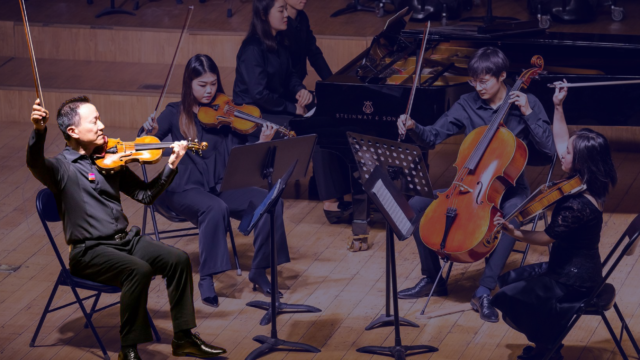Audience Diversification – Strategy 7: The Audience Experience

Donna Walker-Kuhne asks “How can you make your venue warm and inviting? It comes from the heart, from the work you’re presenting, from how you’re training your staff. Make things fun for people coming in and be creative: your venue should be a playground.” In that spirit, some orchestras now have staff positions devoted to audience experience. Roberto Castro became Director of Guest Experience of the San Diego Symphony after years of work optimizing audience experience at venues like SoFi Stadium. “We want to welcome all guests and make sure they have a safe, fun, virtuoso-level experience at our venue,” he says. “Our orchestra is definitely trying to be more welcoming,” overcoming stereotypes like what people think they should wear to the symphony.
Research has found that attendees feeling unwelcome at concerts are twice as likely to be BIPOC than White. And the most often reported sources of discomfort are other audience members and front-of-house staff.
Clearly, ongoing EDI training is critical for front-of-house staff and volunteers. “What is our service culture? Our mission statement? What are our values? We talk about this at every briefing,” says San Diego’s Roberto Castro. Jacksonville Symphony’s Tori Fusinaz agrees that “Everyone should feel welcome, engaged, and comfortable when they visit the Symphony.” This can be challenging for orchestras that do not control their main venues or their front-of-house staff, but, according to Fusinaz, “it’s well worth the effort and investment.” Even when an orchestra does not directly control its venue operations, it must work in partnership with its suppliers to advocate for and instigate a training program that benefits all parties.
Existing audiences can be enlisted in welcoming new guests through pre-concert messaging. “We’re counting on you to help us welcome new friends joining us at tonight’s concert” is the message suggested by Donna Walker-Kuhne. Every concert at the San Diego Symphony is preceded by a slide show welcoming new guests and referring them to the “Orchestra 101” information in the program book. The Virginia Symphony Orchestra’s pre-concert slides highlight African American Fellows in the orchestra. As a result, “people are excited to see the Fellows onstage,” says Nikki Thorpe, Director of Diversity and Engagement.
Recent findings from the Royal Philharmonic Orchestra in London about simple steps that orchestras can take to become more appealing to a wider audience are likely to apply in the United States as well. The RPO’s study found that across audience segments, shorter concerts, more matinee performances, conductors speaking to the audience, and being encouraged to keep phones on during a performance were just some of the things people said would motivate their attendance. Younger attendees were particularly keen to be able to photograph, record, and react on social media in real time.
Storytelling can be important, too, particularly when explaining the relevance of new repertoire. For Jessica Ruiz, Senior Director of Artistic Planning at the Detroit Symphony Orchestra, “new music is new music — unless you tell the story, no one will know.” She stresses a focus on storytelling in both programming and presenting unfamiliar works, to put them on equal footing with well-known works and composers. At the New Haven Symphony Orchestra, Music Director Alasdair Neale’s remarks from the stage challenge audiences to understand why overlooked works like those of Margaret Bonds and Florence Price are not in the canon of American music. “The music’s fabulous, and he makes it exciting to everyone, including long-time, traditional subscribers,” says CEO Elaine Carroll.
Visual storytelling through video projection is also becoming more common, as orchestras apply lessons from the success of movies in concert. Works like Julia Wolfe’s Fire in My Mouth (premiered by the New York Philharmonic in 2019) incorporate absorbing video and staging. The Charlotte Symphony Orchestra has received Knight Foundation support to create “immersive experiences” akin to the touring Van Gogh installations that have been popular the last few years.
Looking for inspiration from other art forms, Donna Walker-Kuhne highlights the efforts of theatres such as St. Ann’s Warehouse in Brooklyn, NY, which typically enhances its productions with themed pre- and post-performance entertainment, food and drink pairings, and lobby décor. Such efforts appeal broadly to new and younger audiences that are likely to be more racially diverse than older audiences. In that vein, the Chicago Philharmonic has after parties sponsored by a brewery, with guest artists in attendance. Says Executive Director Terell Johnson, “our concerts are full.”
Photo: Performance in The Cube, the Detroit Symphony Orchestra’s black box venue. Photo by Sarah Smarch/Detroit Symphony Orchestra.
Related
-
Learn | Executive Leadership & Management
Conference 2024: Opening Session and Gold Baton Award
-
Learn | Equity, Diversity & Inclusion
Conference 2024: Analyzing Orchestra Business Models for Strategic Decision-Making
-
Learn | Equity, Diversity & Inclusion
Conference 2024: Inspiring Change and Collective Impact through Inclusive Stages
Become a member
Thank you for your interest in the League of American Orchestras! We are dedicated to advancing the orchestral experience for all.
Join Now


